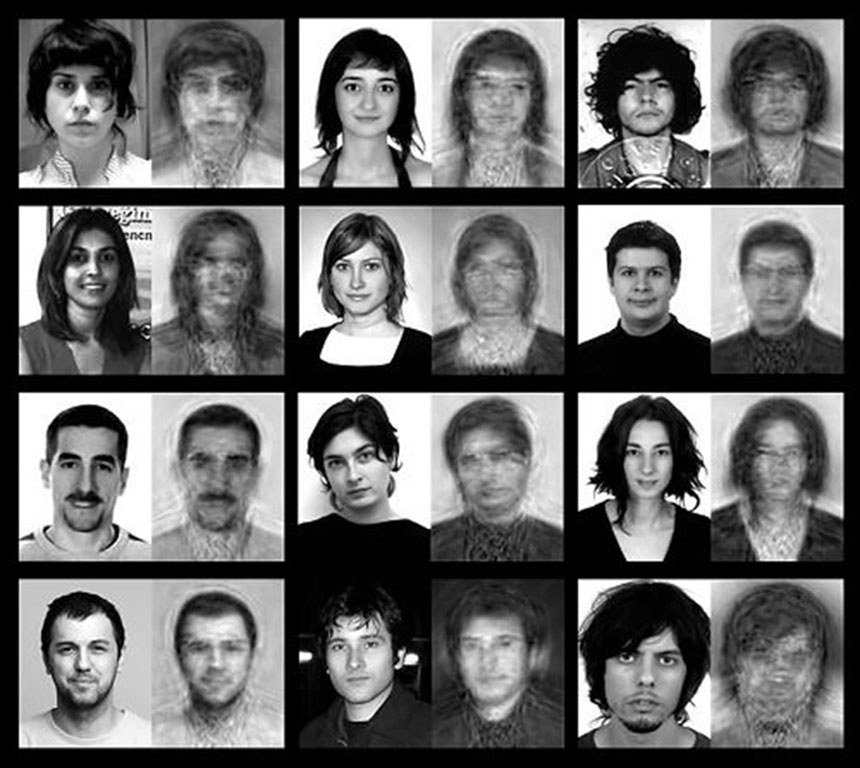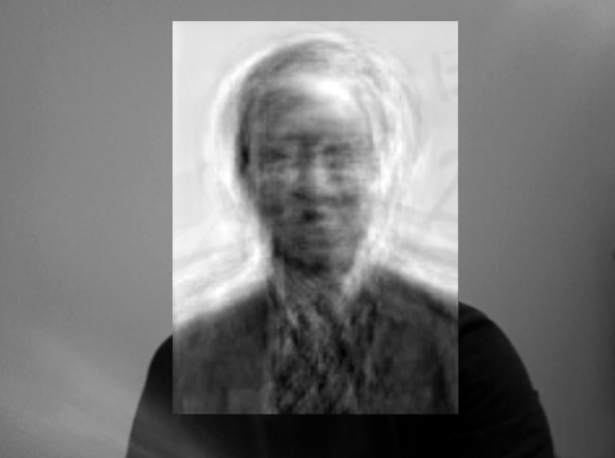Delegations (2007-2008) is a series of works exhibited in Turkey, Mexico and South Korea. When viewers look at the screen, they see a real-time processed image of their faces. In each country, the processed image was constructed using the combination of statistically extracted face features (‘eigenfaces’) of that country’s members of the parliaments.

 Delegation I (“Eigenvekil”, Istanbul, 2007) is an installation consisting of an LCD screen, a PC, a webcam and a digital print. When viewers look at the screen they see a real-time projection of their captured face image on the statistically calculated face features of all 550 members of the Turkish National Assembly. The viewer looks at the screen as if looking at a mirror, only to realize how limited he or she is represented. For the sake of generalization, political representation, mathematical representation and artistic representation all blur the features of the subject represented. Using these different types of representations, “Eigenvekil” points out a problem in representative democracy.
Delegation I (“Eigenvekil”, Istanbul, 2007) is an installation consisting of an LCD screen, a PC, a webcam and a digital print. When viewers look at the screen they see a real-time projection of their captured face image on the statistically calculated face features of all 550 members of the Turkish National Assembly. The viewer looks at the screen as if looking at a mirror, only to realize how limited he or she is represented. For the sake of generalization, political representation, mathematical representation and artistic representation all blur the features of the subject represented. Using these different types of representations, “Eigenvekil” points out a problem in representative democracy.
In Delegation II (“Eigenrepresentante”, Toluca City, 2008), when viewers look at the screen they see two different real-time projections of their captured face image side by side: One being constructed from statistically calculated face features of all members of the Senate of Mexico, the other from the members of the Chamber of Deputies of Mexico.

In Delegation III (Seoul, 2008), the processed image is constructed using the combination of statistically extracted face features of all members of the National Assembly of South Korea. In this version, only the area surrounding the detected face is processed and the rest of the camera image is displayed as it is.

The technique chosen to be used for the reconstruction of the camera images is the eigenface method which, along with other similar face recognition techniques, is mainly used in surveillance systems for finding blacklisted or wanted individuals computationally. For instance, US, Canada and some EU countries require biometric passport or visa photographs which are taken according to strict rules and guidelines in order to be stored in the governments’ databases in a standardized way. This way, the appearance of a person who gets in front of the camera can be compared to the faces previously stored in the system. In each version of the project, the face images in the database are downloaded in advance from the website of the host country’s parliament. The face of the viewer in front of the camera is reconstructed by computer algorithms as if that viewer were one of those members although he or she does not resemble to any of them and the result is displayed in place of the actual face image.
